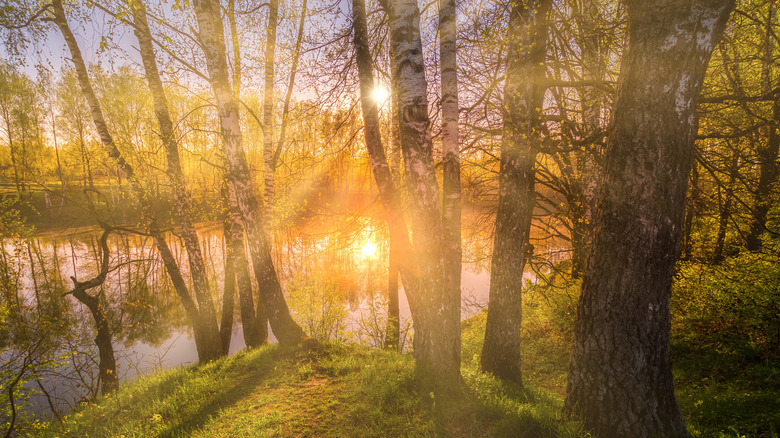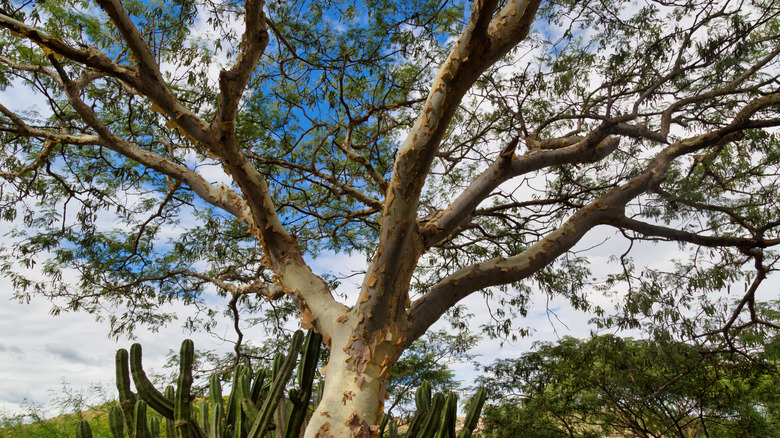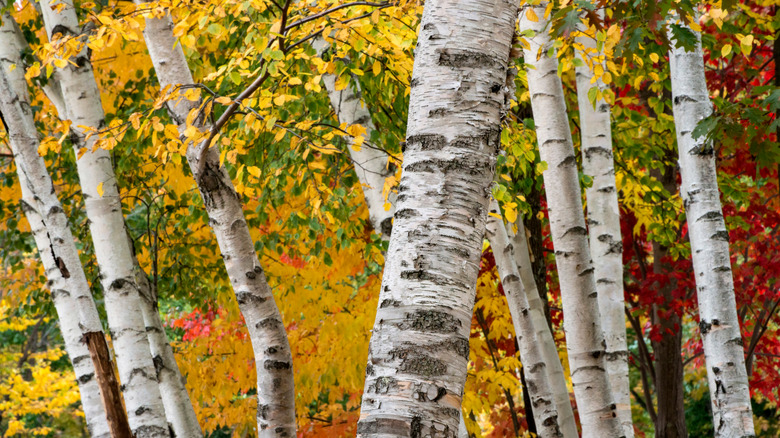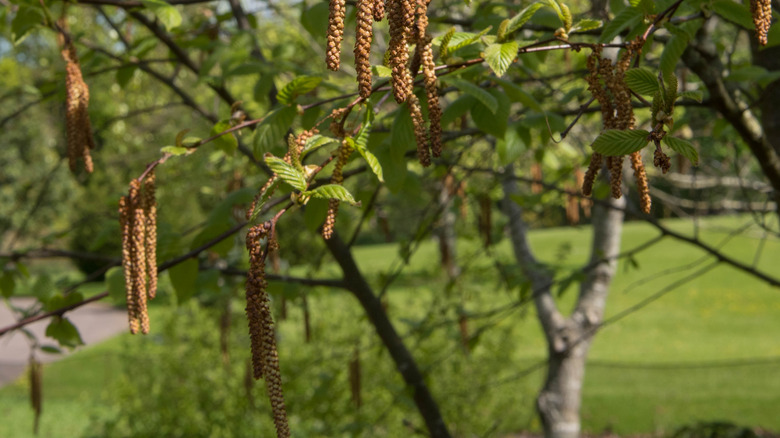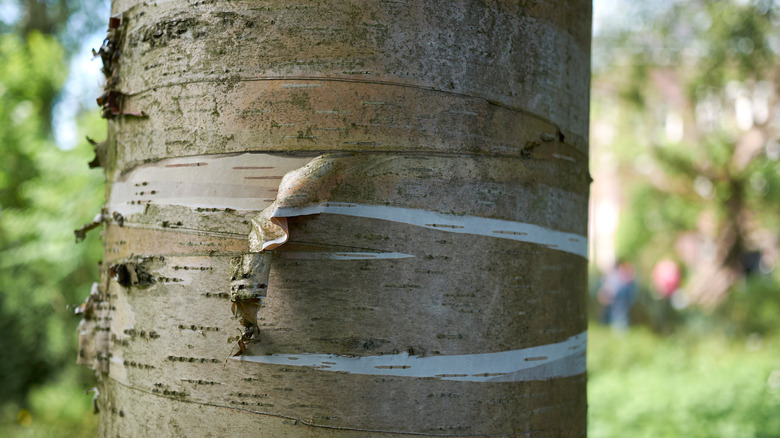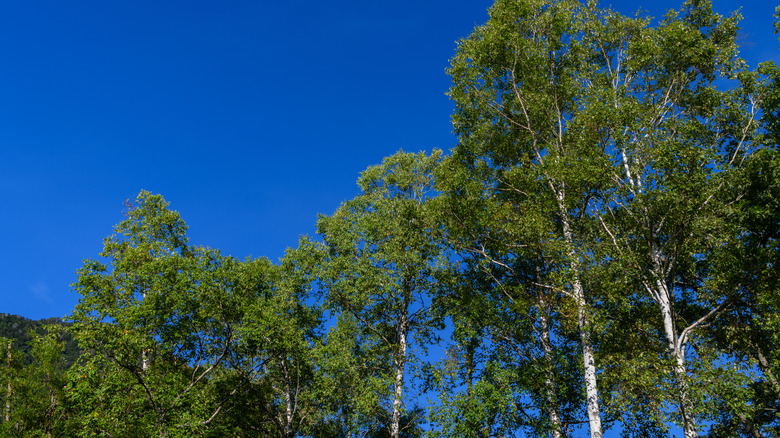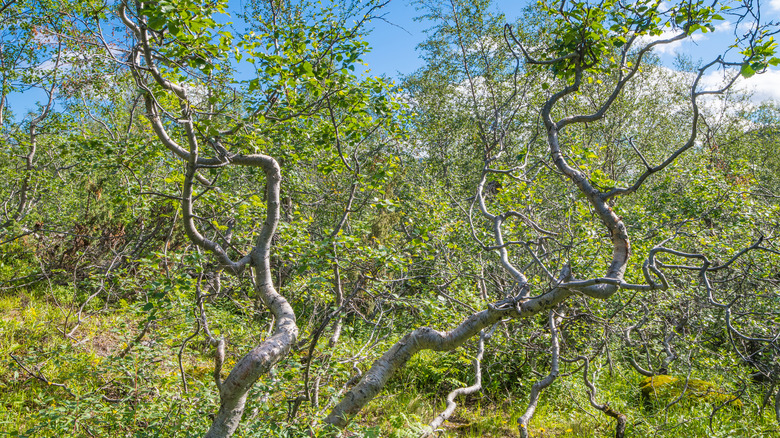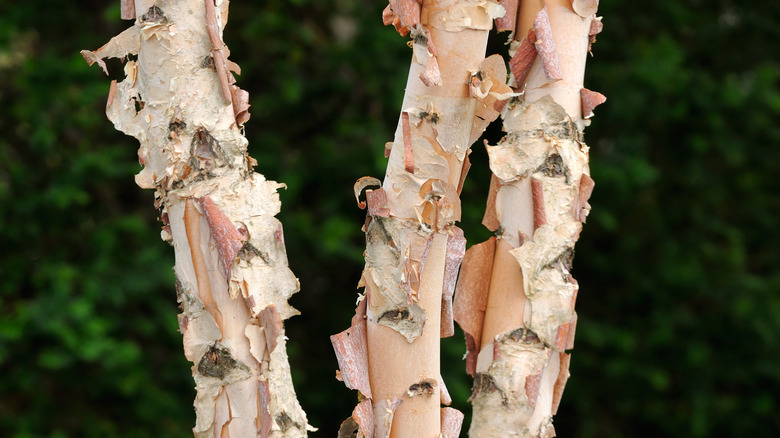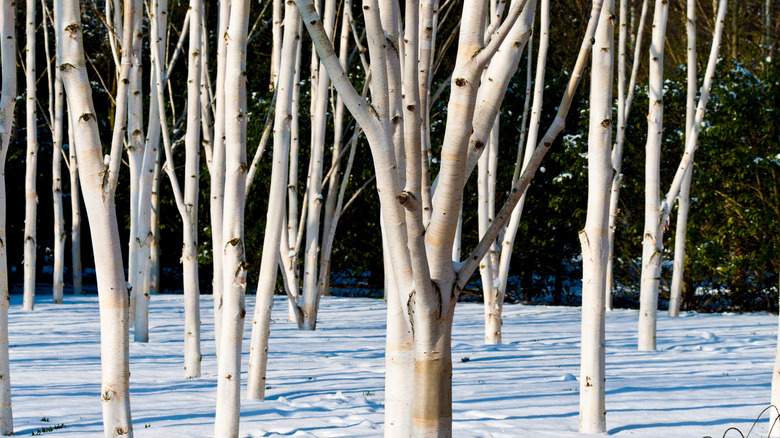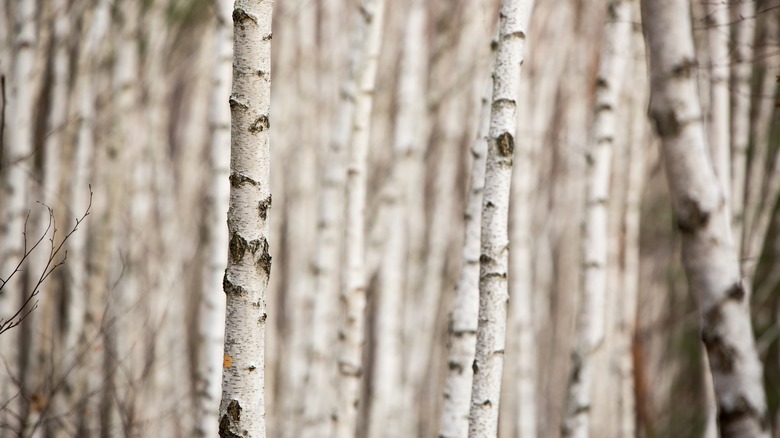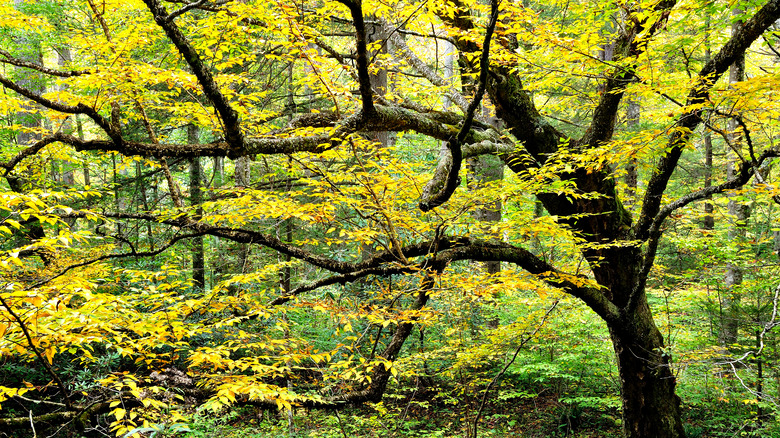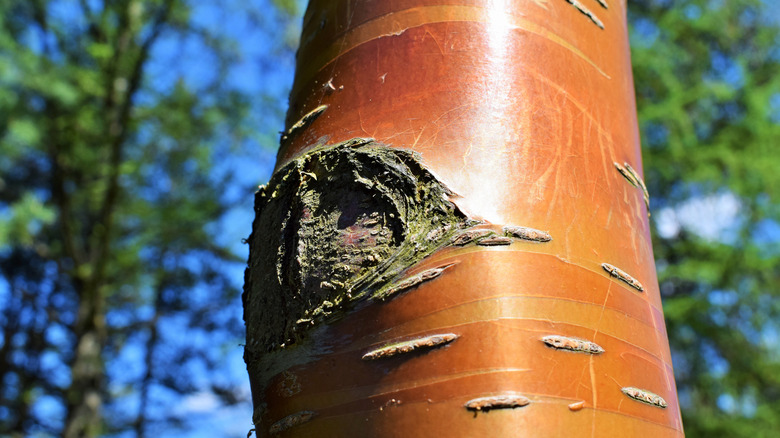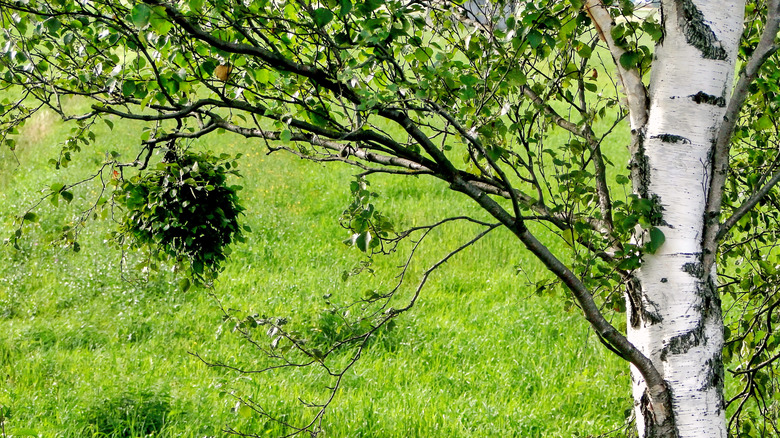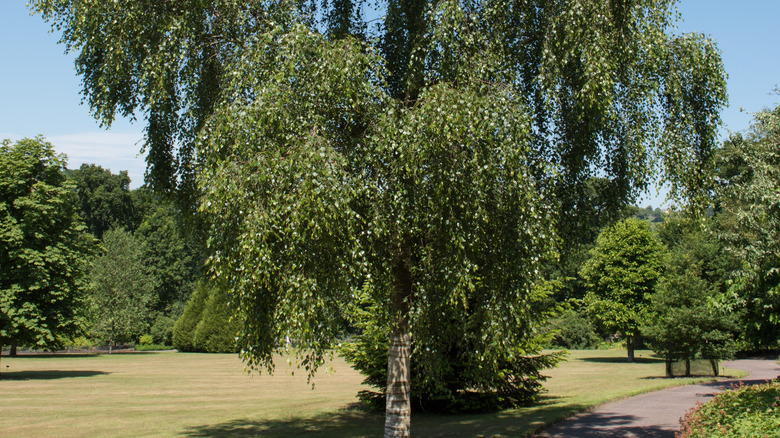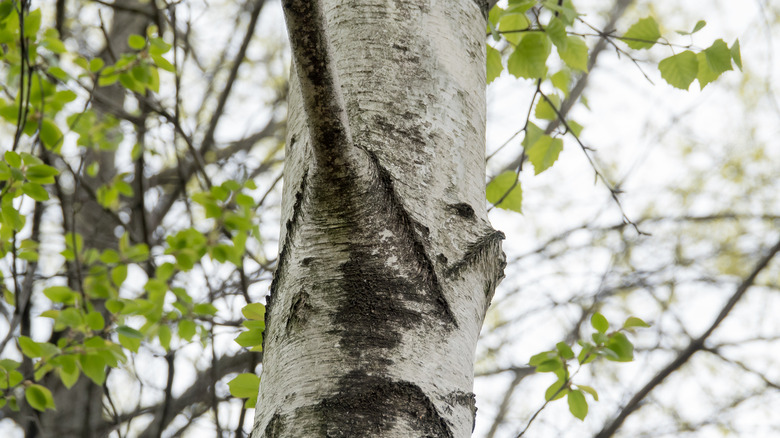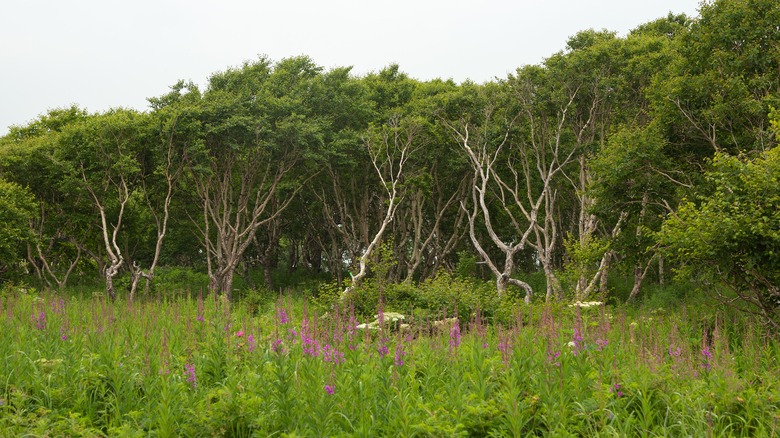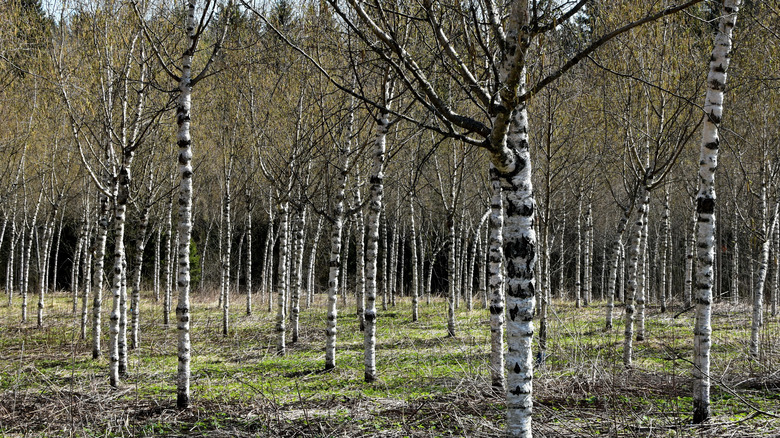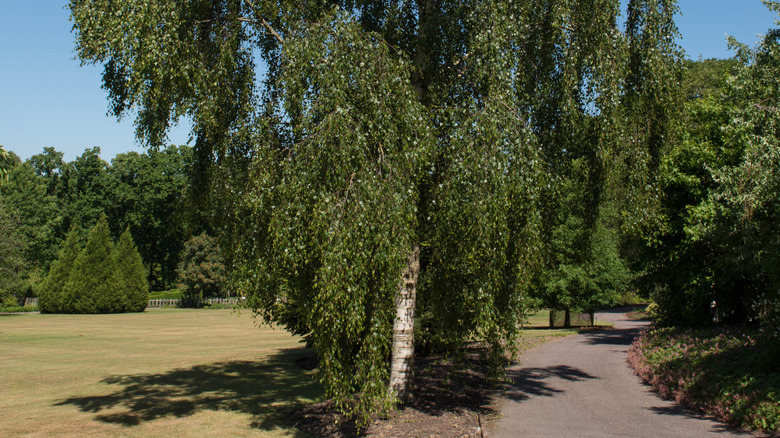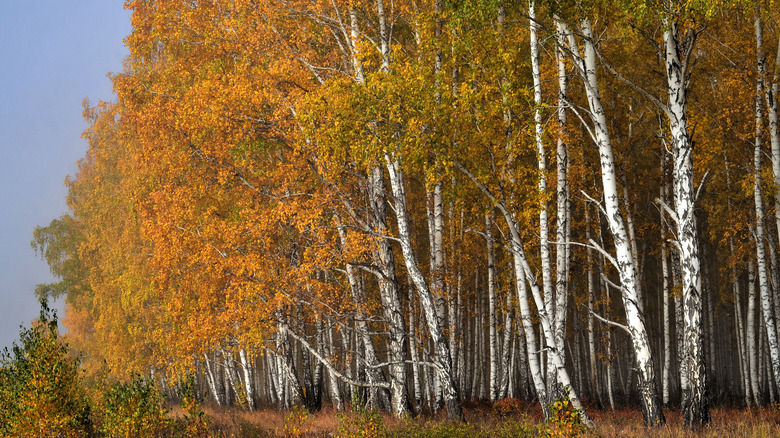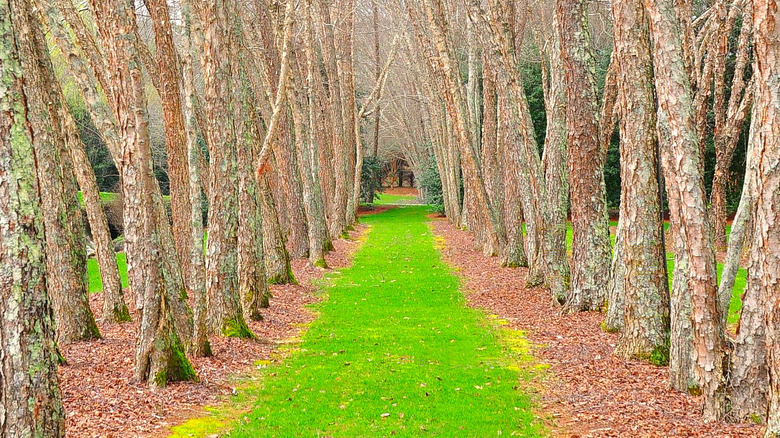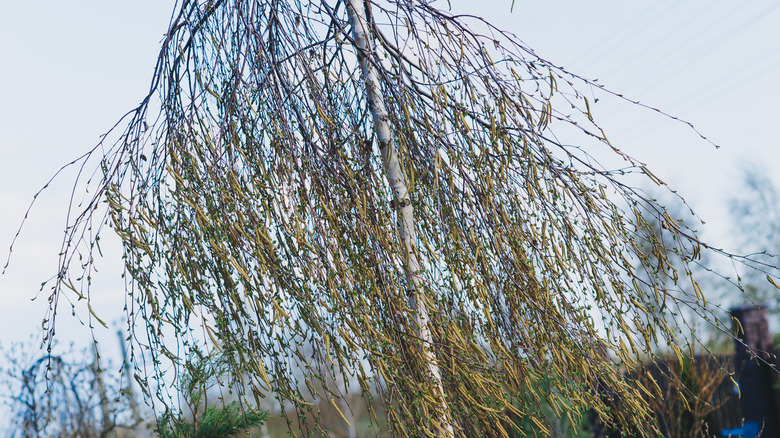20 Common Species Of Birch Tree
The common species of birch trees are small to medium-sized flowering deciduous plants with a broad native history. They are widely available in moist woodlands and temperate regions of the Northern Hemisphere. Birch trees are members of the genus Betula and Betulaceae family of plants. The various species we will be discussing impress with showy, white to gray exfoliating barks, arresting foliage, and graceful habits. Additionally, they offer a striking presence, which has made them a valuable commodity in the landscaping community.
The simplest way to identify birch trees is by their distinct papery barks and bark colors. According to Leafy Place, birch trees derive their common names from the color of their barks, which can be yellow, gray, white, silver, or black. If you are interested in growing a birch tree, this article is a great place to start, as it can help you choose the right species for your garden.
1. Bog birch
Bog birch (Betula pumila) is a medium-sized, short-lived, dense multi-stemmed shrub that features dark-green foliage on stout, spur-like lateral twigs, according to Minnesota Wildflowers. The plant tolerates flooding, making it an excellent choice for rain gardens or landscapes with bodies of water. It is native to North America, occurring over a vast area — from the Yukon to Oregon. As its name indicates, bog birch loves everything associated with wetland environments.
Bloom season: spring
USDA Growing Zone: 2 to 9
Growing Conditions: full sun
Soil Type: wet, alkaline, clay
Size: 4 to 12 feet tall, 6 to 8 feet wide
2. Paper birch
As one of the most common species of birch trees, paper birches (Betula papyrifera) inhabit moist sites and grow along forest borders in the northern and central parts of the U.S. In landscaping, they are planted in groves to create a woodland effect. This method highlights their bright, white papery bark and double-toothed, sharply-pointed leaves. Per Native Plants PNW, paper birches are susceptible to borer insects.
Bloom season: spring
USDA Growing Zone: 2 to 7
Growing Conditions: full sun to part shade
Soil Type: all types, well-draining
Size: 60 to 90 feet tall, 35 to 60 feet wide
3. Cherry birch
Cherry birch (Betula lenta), also known as sweet birch for its wintergreen-fragrant twigs, and black birch for its dark, shiny bark, was once the source of methyl salicylate and birch beer. Today it is primarily a shade tree, and on occasion is harvested as dark wood, which when aged resembles mahogany. You can identify this medium-sized tree by its oval-shaved golden-yellow foliage and dark red bark, per Go Botany.
Bloom season: Spring
USDA Growing Zone: 3 to 8
Growing Conditions: full sun to part shade
Soil Type: well-draining, moist, rich
Size: 60 to 70 feet tall, 35 to 60 feet wide
4. Yellow birch
Yellow birch (Betula alleghaniensis), also known as golden or swamp birch, derives its name from its translucent, golden-yellow bark, which features gray and brown streaks. It is a single-stemmed, deciduous tree that has wide branches with drooping tips. We find yellow birch to be fascinating. Unlike other common species of birch trees, it is slow-growing and has a lifespan of more than 300 years, says UT Austin.
Bloom season: spring
USDA Growing Zone: 3 to 7
Growing Conditions: full sun to part shade
Soil Type: well-draining, fertile
Size: 50 to 100 feet tall, 35 to 60 feet wide
5. Japanese white birch
Landscapers are particularly fond of the Japanese white birch (Betula platyphylla) for presenting elegance in all four seasons. According to Gardenia, it impresses with a golden-yellow color in fall and a burst of tiny yellowish-brown and greenish blooms in spring. The Japan, Korea, and Manchuria native is low-maintenance and widely recognized for its white bark, thin-spreading branches, and pendant-esque branchlets.
Bloom season: spring
USDA Growing Zone: 4 to 7
Growing Conditions: full sun to part shade
Soil Type: well-draining, medium to wet moisture
Size: 30 to 40 feet tall, 15 to 25 feet wide
6. Dwarf birch
Unlike the common species of birch trees, the dwarf birch (Betula nana) is rarely planted in landscapes. The dwarf tree is, however, commonly grown as cover vegetation in its native tundra arctic regions and other cool, temperate zones. The Spruce describes this low spreading, deciduous shrub as having thick, leathery foliage and hairy twigs. Dwarf birch is pretty easy going, except it does not thrive in full shade.
Bloom season: spring
USDA Growing Zone: 2 to 7
Growing Conditions: full sun to part shade
Soil Type: wet, well-draining, acidic
Size: 6 to 48 inches tall, 18 to 36 inches wide
7. River birch
River birch (Betula nigra), as its name implies, sprouts naturally along riverbanks, swampy bottomlands, streams, and floodplains, as stated by the Arbor Day Foundation. It is a fast-growing, deciduous, flowering tree, adding anywhere between 13 inches to over 24 inches to its height each year. River birch resists drought, wetness, and birch borers pretty well. It also offers striking cinnamon-brown exfoliating bark and yellow foliage.
Bloom season: spring
USDA Growing Zone: 4 to 9
Growing Conditions: full sun to part shade
Soil Type: moist, acidic, fertile
Size: 40 to 70 feet tall, 40 to 60 feet width
8. Himalayan birch
As one of the most common species of birch trees, Himalayan Birch (Betula utilis var. jacquemontii) holds down the landscaping fort incredibly well. They are typically planted for ornamental purposes, as they produce pretty, yellowish-brown (male) and greenish (female) blooms, and impress with bright white papery barks. Himalayan Birch requires consistently moist soil so consider using soaker hoses, per Missouri Botanical Garden.
Bloom season: Spring
USDA Growing Zone: 5 to 6
Growing Conditions: Full sun to part shade
Soil Type: Wet, well-drained, sandy or rocky loam
Size: 30 to 40 feet tall, 18 to 25 feet wide
9. Silver birch
What we have here is silver birch (Betula pendula), a deciduous tree of medium height that owes its common name to its silver-white bark. You are likely to see this tree along roadsides or on large landscapes. According to Woodland Trust, mature silver birches produce triangular-shaped leaves, develop diamond-shaped fissures on their barks, and form a canopy with elegant, drooping branches. Silver birch is also characterized by peeling barks.
Bloom season: spring
USDA Growing Zone: 2 to 7
Growing Conditions: full sun to part shade
Soil Type: moist, moderately fertile
Size: 30 to 40 feet tall, 15 to 30 feet wide
10. Water birch
It is impossible to discuss the common species of birch trees without mentioning water birch or red birch (Betula occidentalis). Water birch is a water-loving tree, occurring on the fertile soils of marshes, forests, and streambanks. Depending on its habitat, it may grow as a small shrub or lofty tree. British Columbia notes that it produces shiny, oval-shaped, yellowish-green, and tiny hairy nutlets.
Bloom season: early summer
USDA Growing Zone: 4 to 6
Growing Conditions: full sun to part shade
Soil Type: moist to wet, rich
Size: 10 to 40 feet tall, 10 to 30 feet wide
11. Chinese red birch
The Chinese red birch (Betula albosinensis) is a premier tree, having won the RHS Award of Garden Merit, via Ornamental Trees. As a stunning feature tree, it is planted in groves to create a spectacular display of landscapes across the country. Betula albosinensis produces deciduous green foliage that transforms into stunning shades of yellow in fall. It also features honey, cinnamon, or rich maroon-colored peeling bark.
Bloom season: spring
USDA Growing Zone: 5 to 8
Growing Conditions: full sun to part shade
Soil Type: moist, well-draining
Size: 30 to 50 feet tall, 20 to 30 feet wide
12. Downy Birch
The most common species of birch trees cannot survive in extremely cold climates, except downy birch (Betula pubescens). Native to Northern Asia and Northern Europe, this birch tree occurs farther north than the rest of its kind. Downy birch is an edible plant whose inner bark was once ground into powder to make bread. It offers medicinal properties as well. Per Gardening Chores, downy birch is an astringent, diuretic, and anti-inflammatory agent.
Bloom season: spring
USDA Growing Zone: 2 to 9
Growing Conditions: full sun to part shade
Soil Type: well-draining, moist
Size: 30 to 65 feet, up to 32 feet
13. Weeping birch
Weeping birch (Betula pendula) is graceful beauty personified. It is a subspecies of the silver birch tree, offering the same classic characteristics and double the appeal. This variety has a striking habit — a bright, white bark, dark green leaves, and light yellow catkins. As Gardening Know How notes, there are a few types of weeping birch, including Walker Siberian pea bush, weeping white mulberry, and weeping hemlock.
Bloom season: spring
USDA Growing Zone: 2 to 7
Growing Conditions: full sun to part shade
Soil Type: well-draining, evenly moist
Size: 30 to 40 feet tall, 15 to 30 feet wide
14. Gray birch
Woodworkers value gray birch (Betula populifolia) for its versatility and malleability. It is easily worked with tools to craft woodenware products such as clothespins, spools, and novelties (via The Wood Database). As one of the most common species of birch trees, gray birch offers several identifiable markers, notably, the 2- to 3-inch leaves that grow in an elongated triangle shape, via Crandall Park Trees.
Bloom season: spring
USDA Growing Zone: 2 to 6
Growing Conditions: full sun to part shade
Soil Type: all types but prefers dry soil, low pH
Size: 20 to 40 feet tall, 10 to 20 feet wide
15. Erman's birch
As an extremely variable species, Erman's birch (Betula Ermanii "Grayswood Hill") can be found in Russia, Japan, Northeast China, and Korea. According to Gardenia, this type of birch makes an excellent ornamental or feature tree for landscapes, city gardens, borders, cottage gardens, and foundation gardens. It offers a creamy-white peeling bark and glossy, heart-shaped green leaves that transform into a gorgeous golden-yellow in the fall.
Bloom season: spring
USDA Growing Zone: 6 to 9
Growing Conditions: full sun to part shade
Soil Type: wide range, well-draining, moist,
Size: 30 to 40 feet tall, up to 40 feet wide
16. Curly birch
Curly birch (Betula pendula var. carelica) is a variant of the silver birch. It has a crooked, bushy habit due to a genetic defect that causes the tree to twist toward the stem, creating prominent curly grains. This tree also offers thicker branches, rounded crowns, and abundant bud formation. Curly birch originates from Finland and Russia and is considered one of the common species of birch trees, via Visaseura.
Bloom season: Spring
USDA Growing Zone: 2 to 7
Growing Conditions: Full sun to part shade
Soil Type: Moist, moderately fertile
Size: 15 to 50 feet tall, 15 to 20 feet wide
17. Tristis weeping birch
Hillier Nurseries describes tristis weeping birch (B. pendula "Tristis") as a slender tree with a graceful appearance. It makes an excellent addition to outdoor gardens due to its long and heavy branches that weep down gracefully. During the summer months, it acts as the perfect shade tree as it casts dappled shade that ripples on the ground like water. This cultivar was introduced in the 19th century.
Bloom season: Spring
USDA Growing Zone: 2 to 7
Growing Conditions: full sun to part shade
Soil Type: well-draining, evenly moist
Size: 30 to 40 feet tall, 15 to 30 feet wide
18. Crimson frost birch
Crimson frost birch (Betula "Crimson Frost") is a product of Betula platyphylla var. szechuanica and Betula pendula "Purpurea," according to the Missouri Botanical Garden. Since this cultivar produces purple or burgundy-red foliage and peeling white bark with tinges of cinnamon, it has quickly become one of the most common species of birch trees. Crimson frost birch thrives wonderfully in rain gardens and adds color to landscapes.
Bloom season: spring
USDA Growing Zone: to 7
Growing Conditions: full sun to part shade
Soil Type: well-draining, medium to wet
Size: 25 to 40 feet tall, 15 to 25 feet wide
19. Heritage birch
Heritage birch (Betula nigra "Cully") is a water lover with a broad pyramidal habit. Per J. Frank Schmidt & Son Co, this cultivar is heat-resistant, bearing glossy, light green foliage throughout the summer months before turning pale yellow in the fall. Heritage birch is resistant to leaf spot diseases and the bronze birch borer. Though it prefers wet conditions, it can tolerate dry soils.
Bloom season: spring
USDA Growing Zone: 4 to 9
Growing Conditions: full sun to part shade
Soil Type: moist to wet, slightly acidic, well-draining
Size: 40 to 70 feet tall, 40 to 60 feet wide
20. Weeping river birch
Since weeping river birch (Betula nigra "Summer Cascade" PP15,105) is a hybrid of the river birch, it should be no surprise that it is one of the most common species of birch trees. As North Carolina State University points out, it is fast-growing, heat-resistant, wind-resistant, and perhaps, the most adaptable of all the birch trees. Consider using soaker hoses and bark mulches to keep the soil consistently moist.
Bloom season: spring
USDA Growing Zone: 4 to 9
Growing Conditions: full sun to part shade
Soil Type: wet, well-draining
Size: 5 to 15 feet tall, 20 to 50 feet wide

